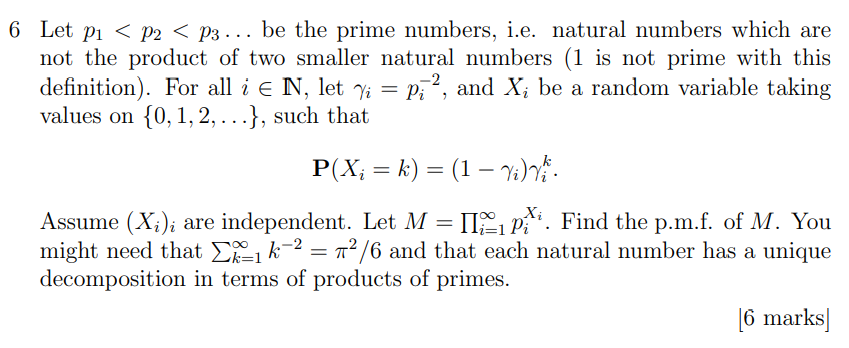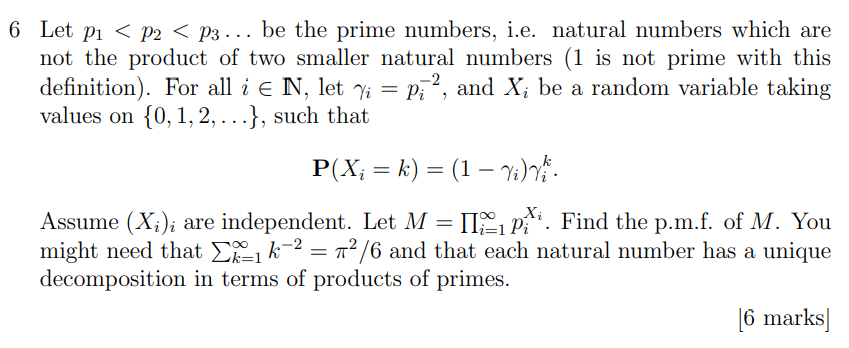Answered step by step
Verified Expert Solution
Question
1 Approved Answer
6 Let p1 6 Let P1 < P2 < P3 . be the prime numbers, i.e. natural numbers which are not the product of two




6 Let P1 < P2 < P3 . be the prime numbers, i.e. natural numbers which are not the product of two smaller natural numbers (1 is not prime with this definition). For all i e N, let pF , and Xi be a random variable taking values on {O, 1, 2, .. such that P(XI k) (1 Assume (Xi)i are independent. Let M Find the p.m.f. of M. You 2 72/6 and that each natural number has a unique might need that k decomposition in terms of products of primes. 16 marks]
Step by Step Solution
There are 3 Steps involved in it
Step: 1

Get Instant Access to Expert-Tailored Solutions
See step-by-step solutions with expert insights and AI powered tools for academic success
Step: 2

Step: 3

Ace Your Homework with AI
Get the answers you need in no time with our AI-driven, step-by-step assistance
Get Started


